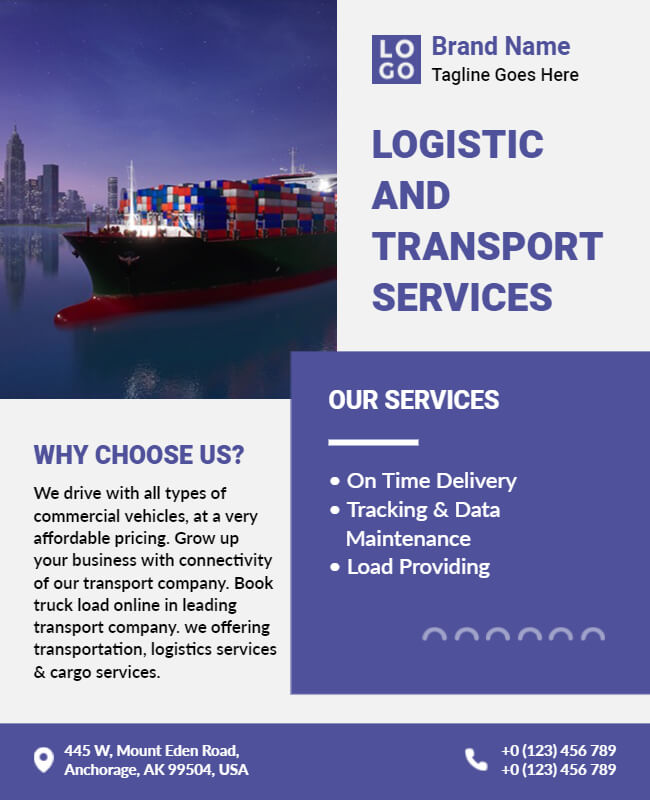Effective Transit Advertising Philippines to Expand Your Audience
Effective Transit Advertising Philippines to Expand Your Audience
Blog Article
Comprehending the Function of Transit Marketing in Enhancing Brand Presence and Consumer Interaction
Transportation advertising and marketing has actually become a critical aspect in the advertising and marketing landscape, offering unique possibilities for brand names to raise their visibility and engage customers properly. With the capacity to get to a varied and captive audience during their day-to-day commutes, these advertising methods are not just regarding exposure; they have to do with producing significant links with possible customers. As we discover the diverse benefits and cutting-edge techniques within transit marketing, it comes to be important to consider exactly how these elements collectively affect consumer assumption and habits, elevating inquiries regarding their long-term influence on brand name loyalty.
Interpretation of Transportation Advertising And Marketing
Transportation advertising refers to the method of advertising items, solutions, or brand names via promotions positioned around mass transit systems. This form of marketing includes a variety of positionings, including posters on trains and buses, electronic displays at transit stations, and covers on the outside of lorries. It intends to get to a varied target market, exploiting on the high foot traffic connected with public transportation.
Transit advertising and marketing is strategically placed to capture the focus of travelers, who usually spend significant time waiting or traveling. By incorporating promotions into the day-to-day routines of individuals, brands can produce a long-term perception and foster brand name recognition. The tool is particularly reliable in city settings, where public transport is a main setting of travel.
In addition, transit advertising can facilitate local targeting, enabling organizations to get to particular demographics based upon transit courses and terminal areas. As metropolitan populaces grow and using public transport increases, this marketing method has actually obtained prominence as an important element of integrated advertising approaches. The vibrant nature of transit marketing, incorporated with its capability to involve consumers in a captive setting, underscores its value in modern marketing practices.
Advantages of Transit Advertising And Marketing
The efficiency of transit marketing hinges on its ability to deliver a wide variety of benefits to brand names seeking to enhance visibility and interaction. One of the primary advantages is the substantial reach it supplies; transportation advertisements can efficiently target varied demographics throughout city areas, getting to both pedestrians and travelers alike. This wide direct exposure substantially enhances brand awareness.
Another advantage is the high frequency of perceptions. As transportation automobiles travel along well-known courses and stop at numerous locations, they develop recurring direct exposure that reinforces brand name messages. This regularity promotes knowledge, which is important in customer decision-making.
Transit advertising is also cost-effective contrasted to other media platforms. Provided its large reach and potential for high impacts, brand names frequently experience a lower expense per thousand impressions (CPM), maximizing their advertising budget.
Moreover, transportation ads can create a feeling of neighborhood connection. By aligning with neighborhood transportation systems, brands can reverberate with local target markets and cultivate a feeling of local pride. This localized technique boosts brand loyalty and involvement, making transportation advertising an engaging option for businesses intending to solidify their visibility in the market.

Effective Approaches for Transportation Campaigns
To make best use of the impact of transit projects, brands should take advantage of critical planning and implementation tailored to their target market. Initially, identifying the market qualities of the audience making use of public transit is essential. This enables brand names to create tailored messaging that reverberates with potential customers.
Following, choosing the right transit mediums is necessary. Whether using bus wraps, subway posters, or electronic screens, each medium has distinct benefits that can boost exposure. As an example, vibrant visuals on bus wraps can bring in focus, while electronic ads can be updated frequently to mirror timely promos.
Additionally, integrating a natural branding technique throughout transit systems ensures uniformity and reinforces the brand's identity. Using unforgettable taglines and appealing designs will certainly reinforce brand name recall among travelers.
By utilizing these strategies, brand names can effectively harness the potential of transit advertising, cultivating higher awareness and link with their target audience. Eventually, a well-executed transportation campaign can drive considerable development in brand name exposure and customer involvement.

Measuring Impact and Engagement
In assessing the performance of transportation marketing campaign, exact dimension of effect and interaction is crucial for brands seeking to enhance their advertising strategies. Metrics such as reach, frequency, and impacts provide fundamental information to evaluate presence. Assessing these factors assists figure out the number of possible customers are revealed to the advertisements during their daily commutes.
Involvement can be further gauged with consumer communications, such as web site traffic, social media points blog out, and direct responses to calls-to-action featured in the ads. Making use of tools like QR codes or one-of-a-kind Links can facilitate monitoring of customer habits directly connected to transit campaigns. Surveys and responses mechanisms likewise function as beneficial methods to collect qualitative information on customer assumptions and recall of the advertisement.
Moreover, advanced analytics and acknowledgment designs can correlate transit exposure my company with succeeding investing in behavior, using understandings right into the roi. By utilizing a comprehensive technique that combines measurable and qualitative actions, brands can develop a nuanced understanding of their transit marketing impact. Ultimately, this data-driven method enables brands to improve their projects, guaranteeing they resonate efficiently with target audiences and boost overall brand presence.
Instance Researches of Effective Projects
Successful transportation marketing campaigns act as engaging instances of just how effective approaches can elevate brand name exposure and interaction. Transit Advertising Philippines. One noteworthy situation is the "I Love New York" project, which changed the city's picture and brought in millions of tourists. By using train advertisements, billboards, and bus wraps, the project produced a solid, natural brand name identity, leading to a significant uptick in tourism and neighborhood organization patronage
Another excellent campaign is Coca-Cola's "Share a Coke" campaign, which leveraged transportation advertising to customize the brand experience. By including prominent names on marketing products throughout different transportation platforms, Coca-Cola cultivated a deeper emotional link with consumers, urging them to share their experiences on social media.
Furthermore, the "Got Milk?" campaign effectively made use of mass transit advertisements to get to a wide audience, reinforcing the message of the importance of milk in a well balanced diet. The project saw a quantifiable boost in milk consumption in target demographics.
These situation studies show that when executed attentively, transportation marketing can substantially boost brand exposure, foster customer engagement, and drive quantifiable outcomes, demonstrating its essential role in modern-day marketing approaches. - Transit Advertising Philippines
Conclusion
In verdict, transit advertising and marketing serves as an important device for enhancing brand exposure and promoting consumer engagement. Eventually, the capacity to determine involvement and evaluate successful situation research studies highlights the performance of transit advertising in driving brand commitment and customer communications.
Transit marketing has actually arised as a crucial aspect in the advertising and marketing landscape, providing special possibilities for brand names to elevate their exposure and involve consumers successfully.Furthermore, transit marketing can promote localized targeting, enabling businesses to reach details demographics based on transit paths view and terminal places.In assessing the effectiveness of transit advertising projects, precise measurement of effect and engagement is essential for brand names seeking to optimize their marketing techniques.Successful transportation marketing campaigns serve as engaging instances of how efficient techniques can boost brand exposure and involvement.In conclusion, transportation marketing serves as a crucial tool for improving brand name presence and fostering consumer engagement.
Report this page